Goal: I am trying to acquire the size of the iris (width/radius) using video as input.
I have tried HoughCircles but it seems that it is not precise as the iris circle seems to not be so accurate. What information I have already is the center point for the eye pupil and its radius.
It has been suggested to me to find the iris edge to try and measure the gradient magnitude starting from the pupil center going outward. Then to use a histogram using the accumulation of the gradient maximum to find the iris width. I am not exactly sure in which way to implement this, starting from a specific point.
I used the Sobel operator on the eye ROI to try and get the gradient with the output shown below.
Sobel image code:
void irisFind(Mat gradMat, Point2i pupCenter, int pupRad){
imshow("original", gradMat);
Mat gradX;
Mat gradY;
Mat absGradX;
Mat absGradY;
GaussianBlur(gradMat, gradMat, Size(3, 3), 0, 0, BORDER_DEFAULT);
equalizeHist(gradMat, gradMat);
//Generate Gradient along x
Sobel(gradMat, gradX, CV_16S, 1, 0, 3, 1, 0, BORDER_DEFAULT);
convertScaleAbs(gradX, absGradX);
//Generate Gradient along y
Sobel(gradMat, gradY, CV_16S, 0, 1, 3, 1, 0, BORDER_DEFAULT);
convertScaleAbs(gradY, absGradY);
addWeighted(absGradX, .5, absGradY, .5, 0, gradMat);
imshow("Sobel", gradMat);
}
I am not exactly sure how to proceed next. Any suggestions or comments are appreciated. Also please let me know if I missed any information or if I was vague on something. Much thanks in advance!
EDIT: I should have explained the context of my application better so I apologize for that. I am measuring pupil dilation of the eye over frames from video input. I already know the location of the center point of the pupil and the radius of the pupil. I am trying to find the size of the iris so that variations of the distance from the eye to the camera can be used to compensate for misinterpreted values of the pupil size, since if the eye becomes closer to the camera the pupil will of course appear larger without dilation. I might also try other ways to account for this such as the eye corners but I figured that since I already have several pupil features that I would start with the iris.
Again, sorry for leaving this detail out before. Thanks!

